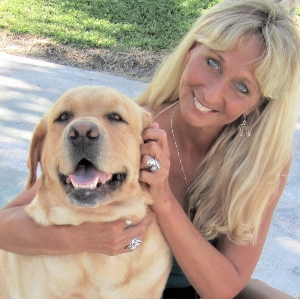(By Monica Lynn, the “Fairy Podmother) One of the greatest blessings we enjoy here in Ft Myers Beach is being able to observe dolphin calves in the wild. The back bay of Ft Myers Beach serves as a nursery for diverse wildlife, including manatees, sharks, and, of course, our beloved dolphins. The more we know about our local dolphin family, the better equipped we are to protect them.
It is quite evident that dolphins engage in and enjoy mating behavior throughout the year, but they do tend to mate and give birth in our area in the spring and fall. The gestation period for dolphins is about 12 months and mothers give birth to their calves while swimming, with the tail and flukes of the calf emerging first.
As soon as the calf is born, mama helps her baby to the surface to take his first breath of air. Unaccustomed to his new environment, a calf will often comically raise his head far higher than necessary, resulting in “chin slapping.” One way to identify a newborn is that they are often darker in color, which presumably serves as camouflage from predators. They also display “fetal bands,” lighter color stripes around their midsection, resulting from being scrunched up in utero. Both the fetal bands and darker color will slough off in a few weeks after birth.
The strongest bond in the dolphin world is that between a mother and her calf. The calf learns his mother’s name, a unique signature whistle, while in her womb and will create his own signature whistle within the first year of his life. He is highly aware of his own individuality. Dolphin calves can actually recognize themselves in a mirror before a human infant can.
A baby swims closely around his mother both to save energy for rapid growth and to enable him to nurse quite easily and “slip stream.” Slip streaming allows the baby to take advantage of the low pressure area created by his mother while swimming, helping him to swim in an upright, controlled manner.

Calves weigh anywhere from 22-44 pounds at birth and range from 2-4 feet in length. They are dependent on their mother’s milk for the first 18 months of their lives, although they start to eat small fish when about three months old. Some mothers will continue to nurse their young for two to three years. Their milk is extremely rich and fatty, enabling their calf to gain 1/2 -3/4 pounds a day for the first six months.
For the first three to six years of his life, a dolphin calf stays close to his mother, learning how to fish and master other skills, including how to properly echolocate, or locate objects through the use of referred sound. This skill takes time to master and calves often sport scratches from bumping into objects. This is one important reason why we should never encourage dolphins to jump in our vessel’s wake; it is far too easy for the young ones to run into a boat, or worse yet, a moving propeller.
Nursing mothers need to eat twice as much as an average adult dolphin, or about 48 pounds of fish a day. At times, she will leave her youngster with an “allomother,” or babysitter, from within their nursery group, so she can go off alone to focus on fishing. This benefits her calf, as well, as he can learn much from other teachers within this “school,” including other mothers and older calves.
A beautiful bond is formed between male dolphin calves when they are still very young. They often choose a best friend with whom to form a lifelong alliance. Research shows that males with an ally tend to have better success reproducing, as they help one another in the areas of both fishing and mating.

What can we do to ensure that our local dolphin calves not only survive, but flourish? Most of us get excited when we see those adorable calves, but if we really love and respect them, we will give them space and not chase them. Mothers become stressed when boats or jet skis get too close to their young, and often indicate this by “tail slapping.” NOAA (the federal organization responsible for protecting dolphins) recommends that we put our boats and personal watercraft in neutral when we are 50 yards away and view them from a safe distance. Quite often, when they don’t feel threatened, dolphins will then approach you on their own terms. That is truly the best way to observe “dolphins being dolphins.” They give us so much pleasure and joy and we can show our love and appreciation for them by becoming “Pod Protectors.”
Be A Pod Protector:
- Don’t feed or touch dolphins.
- Don’t corral or encircle dolphins with boats or personal watercraft.
- Don’t drive directly toward or over dolphins.
- Don’t deliberately encourage dolphins to jump in your wake.
- Don’t entice/lure dolphins to you with loud noises, dolphins whistles or sounds.
(If you witness dolphin harassment, record if possible & call NOAA at 1-800-853-1964)
Article and Photographs by Monica Lynn

